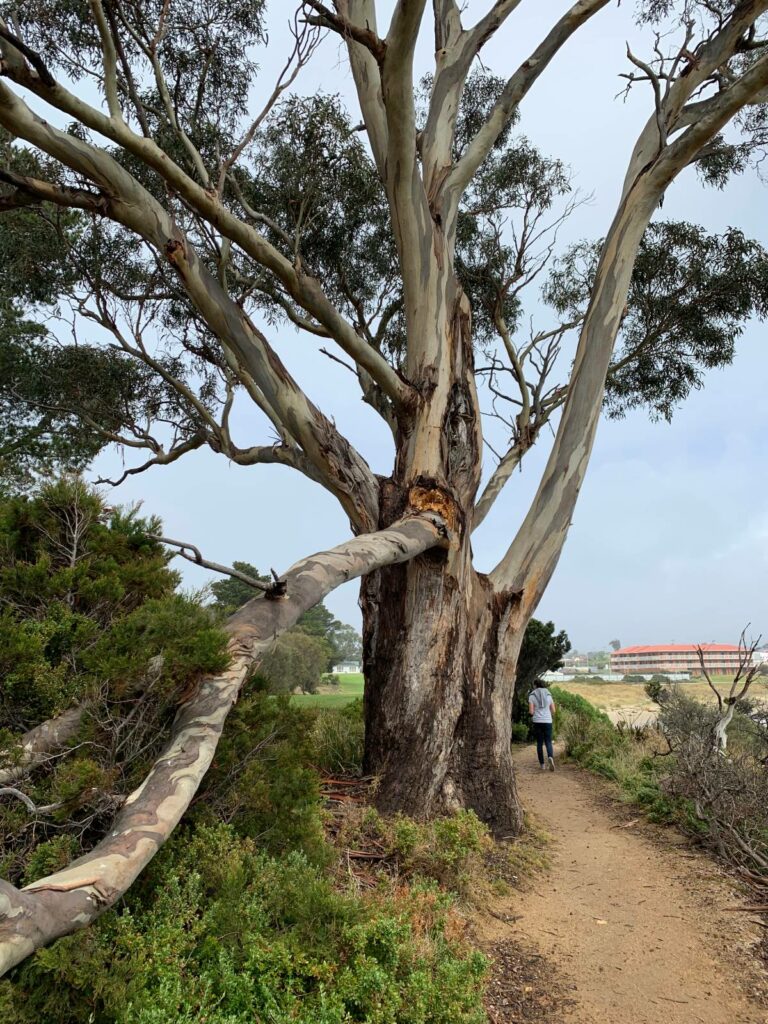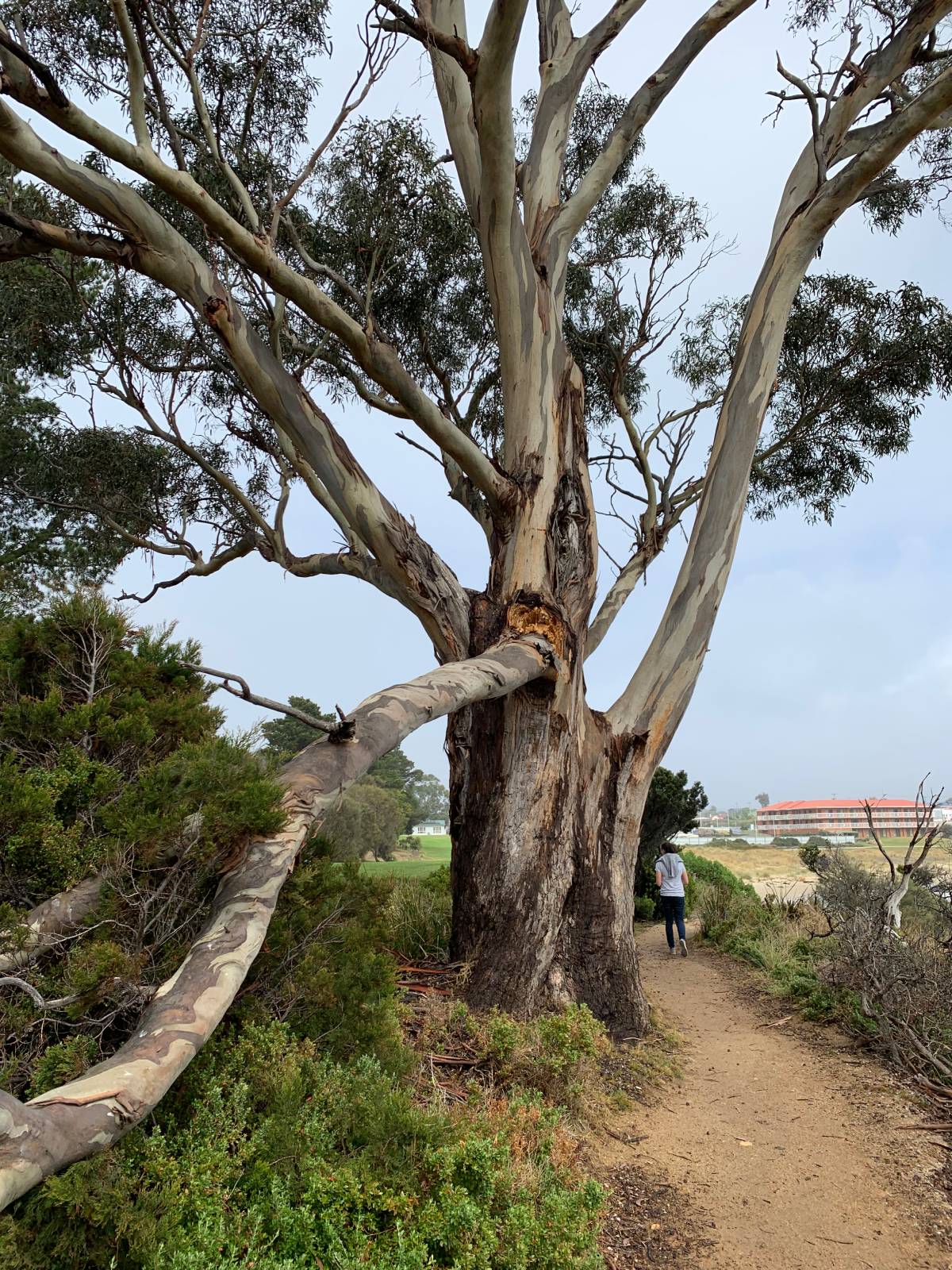Well-managed trees are an asset to your school
Trees play a vital role in creating a peaceful and attractive environment for schools. However, as trees grow and age, they can become hazardous and pose a risk to those who use the school grounds. This is particularly relevant in relation to tree failure, where a tree may collapse or fall unexpectedly, potentially causing injury or damage.
It is also important not to overreact and remove trees without proper consideration or evaluation of the risks. Trees provide many benefits, including improving air quality, reducing noise pollution, and providing shade and habitat for wildlife. It’s important to strike a balance between managing the risk of tree failure and preserving the benefits that trees provide.
It is important to note that while it is crucial for organisations to manage the risk of tree failure, there is no need for alarmism or unnecessary action to remove all risk. The goal is to manage the risk in a responsible and proportionate way.
For schools, ensuring the safety of students and staff is of the utmost importance, and it’s essential to understand the duty of care that they have to manage the risk of tree failure. In this article, we’ll explore what this duty of care entails and what schools can do to keep everyone safe.
What is the duty of care?
The duty of care is the responsibility of an organisation to take reasonable steps to ensure the safety and well-being of others who use their property. In the case of schools, this means taking reasonable steps to ensure that students, staff, and visitors are not exposed to hazards on school grounds, including the risk of tree failure.
Schools have a legal obligation to comply with occupational health and safety laws and regulations, which include the obligation to manage the risk of tree failure. This means that schools must take reasonable steps to identify, assess, and control hazards, including trees, on their property.
Who is qualified?
There are risk assessment qualifications specifically for trees, such as TRAQ (Tree Risk Assessment Qualification), VALID and QTRA (Quantified Tree Risk Assessment). These qualifications equip individuals with the necessary knowledge, skills and experience to assess the risk posed by trees, and to develop strategies for managing that risk. Having a qualification in tree risk assessment and a background in arboriculture, horticulture or plant science means that the individual has the required skills and knowledge to carry out tree risk assessments to a high standard. Your average tree lopper likely does not have the required skill level to identify hazards and assess risk unless they can provide the above qualifications.
Identifying tree hazards
The first step in managing the risk of tree failure is to identify any hazardous trees or branches on the school grounds. Tree hazards can be caused by a variety of factors, including disease, decay, insect infestation, structural defects, or damage from storms. To identify these hazards, schools should conduct a thorough survey of their grounds and have an arborist or tree specialist assess the trees using a recognised methodology.
Assessing tree risks
Once hazardous trees or branches have been identified, the next step is to assess the risk they pose. This involves evaluating the likelihood and consequences of the tree falling or collapsing, and the likelihood of someone being injured. The assessment should also consider the proximity of the tree to people, property, and infrastructure, and the type of use that takes place in the area. This is known as the target value and can be a quantified value based on the amount of time spent in the area of impact.
The risk assessment report typically provides a list of priorities for work to be conducted, based on the level of risk. The report may also include recommendations for removing hazardous trees, pruning or shaping trees to reduce the risk of failure, and maintaining the health of the trees. The ultimate goal of the risk assessment is to identify potential hazards and implement measures to reduce the risk of injury or damage.
Risk mitigation
Based on the assessment, schools should mitigate any intolerable risk identified by the assessor. These measures could include removing the hazardous tree, pruning it to reduce the risk, installing cable and bracing or simply discouraging people from lingering in the area near the hazard.
If removal is necessary, schools should make sure that the work is carried out by a qualified arborist who follows appropriate safety procedures. The removal should also be done in a way that minimizes disruption to the school environment and does not pose a risk to people, property, or infrastructure.
Monitoring and annual maintenance
Once the high and medium priority risks have been mitigated, schools should regularly monitor and maintain their trees to ensure that the risk of tree failure remains tolerable. This could involve having an arborist or tree specialist inspect the trees on a regular basis and carry out any necessary pruning or maintenance. Regular maintenance is basically a preventative measure and should form part of the regular cycle of management.
Schools should also have a system in place to respond to any changes or incidents that could affect the stability of the trees. This could include monitoring for signs of disease, decay, or insect infestation, and responding promptly to any incidents such as damage from large storm events that could pose a risk to people or property.
Conclusion
As schools are responsible for ensuring the safety and well-being of their students and staff, it is important for them to assess and manage risks associated with trees on their premises. This includes the risk of tree failure, which can result in injury or damage to property.
To fulfill their duty of care, schools should take a proactive approach to managing tree risks by conducting regular inspections and risk assessments. This includes monitoring trees for signs of decay, disease, or structural issues that could make them more likely to fail. In addition, schools should have in place a strategy for managing trees, which should include adequate risk assessment, risk mitigation, monitoring and preventative maintenance.
Case study
In recent news, Bupa Care Homes has been fined £400,000 after a tree fell on an 8-year-old girl and caused her catastrophic injuries, including the amputation of her leg. An investigation by the Health and Safety Executive (HSE) found that the care home provider had failed to have in place a strategy for managing trees on their premises, including adequate risk assessments and inspections to identify any potential hazards.
This incident serves as a reminder of the importance of properly managing trees on properties to ensure the safety of those who come into contact with them. Whether it be a care home, school, or any other organisation, it is the responsibility of the owner, operator or managing entity to provide a safe environment for employees, residents, and visitors.
Schools must have a system in place to manage trees, including regular risk assessments, inspections, and monitoring to identify potential hazards. In the event that a hazard is identified, action must be taken to address it, whether that be through pruning, removing the tree, or any other necessary measures.
By taking these steps, schools can help to prevent tragic incidents like the one involving Bupa Care Homes, and ensure that they are meeting their duty of care obligations. The case serves as a warning to all organisations to take the necessary measures to manage trees on their premises and prioritise the safety of those who come into contact with them.
In Australia, a similar incident occurred in 2016, when a student was injured by a falling tree at a school in Sydney. The investigation found that the school had failed to properly assess the risk posed by the tree, and had failed to take action to prevent it from falling. The school was fined $50,000 for its failure to provide a safe environment for its students.
These cases highlight the duty of care that schools and other organisations have to manage the risk of tree failure. Organisations have a responsibility to provide a safe environment for their employees, students, and visitors, and failure to do so can result in serious consequences, including fines and legal action.
Trees provide many benefits, including improving air quality, reducing noise pollution, and providing shade and habitat for wildlife. It’s important to strike a balance between managing the risk of tree failure and preserving the benefits that trees provide. The goal is to manage the risk in a responsible and proportionate way.
We can help
Tasmanian Arboriculture Consultants offers a comprehensive Arboriculture Asset Management service designed specifically for schools. This service includes a tree inventory, risk assessment, and annual maintenance, ensuring that schools can properly manage the trees on their premises and provide a safe environment for their students and staff. The tree inventory provides a detailed list of all the trees on the school grounds, while the risk assessment identifies any potential hazards posed by the trees, and the annual maintenance program helps to ensure that the trees are properly maintained and any issues are addressed in a timely manner.
With this service, schools can have peace of mind knowing that they are meeting their obligations to provide a safe environment for their students and staff, while also ensuring that the trees on their premises are well-maintained and healthy.

A failed tree limb poses serious risk to those who use the school grounds

